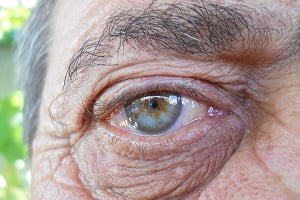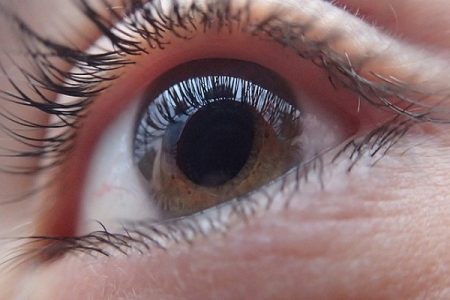Late Onset Stargardt’s Disease
- Updated on: Mar 4, 2020
- 2 min Read
- Published on Mar 4, 2020

What is Late Onset Stargardt’s Disease?
Late onset Stargardt disease is an age related macular degeneration (AMD) and is associated with missense mutation outside functional domains ABCA4.
Late-onset Stargardt disease involves a typical phenotype of yellow-white flecks and retinal pigment epithelium (RPE) atrophy. Symptoms of atrophy may initially occur in the parafoveal retina and radially expand in size over time.
What are The Symptoms of Late Onset Stargardt’s Disease?
Late onset Stargardt’s disease patients usually encounters with metamorphopsia (a distorted vision in which a grid of straight lines appears wavy and parts of the grid may appear blank) and no visual acuity.
The disease occurs in adults of 40-50 years age. The symptoms may include:
- blind spots
- blurred vision
- sometimes the condition becomes asymptomatic
What Is the Diagnosis of Late Onset Stargardt’s Disease?
Patients with this disease are generally asymptomatic and coincidentally diagnosed during screening tests for other retinal diseases like glaucoma, diabetes, or thyroid problems.
Genetic analysis tests specific for mutation in ABCA4 gene are usually done to diagnose late onset stargardt’s disease.
Biomarkers to identify this disease are crucial. Fundus autofluorescence (FAF) imaging may clearly visualize areas of retinal pigment epithelium (RPE) atrophy which is a frequent feature of late onset stargardt’s disease and change in RPE atrophy over a time.
Fluorescein angiography of RPE hypertrophy typically presents the blockage of fluorescence (except in the areas of atrophy which are hyper fluorescent).
Optical coherence tomography (OCT) of RPE hypertrophy will show both thickening and thinning of retina. The overlying retina becomes thinned and the retinal pigment epithelium can be either thickened or thinned. Beside, the underlying choroid may become typically thinned.
These tests are done for RPE atrophy which is the most common issue found in late onset stargardt’s disease patients.
What is the Treatment of Stargardt’s disease?
In recent years, discovering biomarkers in retinal disease has become a crucial issue for therapeutic trials that aim to test the efficacy of a drug. A surrogate outcome measure adopted by the U.S. Food and Drug Administration is atrophy in late onset Stargardt’s disease.
Research has shown that RPE atrophy can also be used as an outcome measure in late-onset Stargardt. For late-onset Stargardt patients, their adult age makes them ethically more appropriate candidates to participate in clinical trials than patients in minor age.
Although treatment of late onset stargardt’s disease is still unknown but it has proven that RPE atrophy is a frequent characteristic of this disease. The treatment for RPE atrophy can be suggested in cases of late onset Stargardt.
Vitamin A supplements betacarotene is generally suggested in age related macular degeneration patients.













1 Comment
Rattling informative and wonderful bodily structure of content, now that’s user pleasant (: